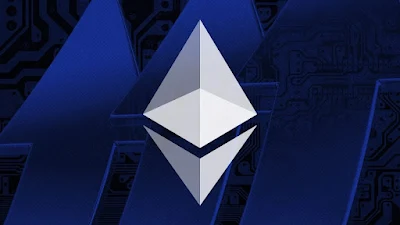Ethereum has long been a frontrunner in the world of blockchain technology, but as the cryptocurrency landscape evolves, so must Ethereum. Enter Ethereum 2.0, a highly anticipated upgrade that promises to revolutionize the way the network functions. This article explores the key features of Ethereum 2.0, with a particular focus on its shift towards Proof of Stake and the implementation of sharding, paving the way for a more scalable and efficient blockchain. For those eager to harness the full potential of Ethereum's next chapter, platforms like https://syntrocoin.co/ offer opportunities to engage with Ethereum 2.0 and its exciting developments.
The Evolution of
Ethereum
Ethereum's Remarkable
Journey
Ethereum, created by the visionary Vitalik Buterin, has been at the forefront of the blockchain revolution since its inception. Its unique smart contract capabilities have paved the way for decentralized applications (DApps) and a thriving ecosystem of tokens. However, the network has faced significant challenges, primarily related to scalability and energy consumption. Ethereum 2.0 is the answer to these challenges, propelling the blockchain into a new era.
The Necessity of
Ethereum 2.0
The surge in popularity of Ethereum has exposed the limitations of its current architecture. With more users and DApps joining the network, Ethereum faced congestion, high transaction fees, and energy inefficiency due to its reliance on Proof of Work (PoW). Ethereum 2.0 is the much-needed upgrade, embracing Proof of Stake (PoS) and sharding to address these issues head-on.
Proof of Stake: A
Paradigm Shift
The Power of Proof of
Stake
Proof of Stake (PoS) is at the heart of Ethereum 2.0's transformation. This new consensus mechanism replaces the energy-intensive PoW, making the network more sustainable and environmentally friendly. In PoS, validators are chosen to create new blocks and validate transactions based on the amount of cryptocurrency they "stake" as collateral, rather than solving complex mathematical puzzles. This fundamental shift has several advantages:
● Energy Efficiency: PoS significantly reduces the energy consumption associated with mining, making Ethereum more eco-friendly.
● Increased Security: PoS encourages validators to act honestly, as they have a financial stake in the network's well-being.
● Reduced Centralization: PoS mitigates the risk of centralization that often plagues PoW networks.
Sharding: Scaling
Ethereum to New Heights
Sharding Unveiled
Another pivotal feature of Ethereum 2.0 is sharding, a solution to the network's scalability issues. Sharding involves breaking the blockchain into smaller, interconnected chains or "shards." Each shard can process transactions and execute smart contracts independently, significantly increasing the network's capacity. Sharding offers various benefits:
● Improved Scalability: With sharding, Ethereum can handle a larger number of transactions simultaneously, eliminating congestion and high fees.
● Enhanced Speed: Transactions within each shard can be processed faster, ensuring a smoother user experience.
● Sustainable Growth: Sharding allows Ethereum to adapt and expand efficiently as the ecosystem grows.
Ethereum 2.0 in
Action
The Phases of
Ethereum 2.0
Ethereum 2.0's implementation is a multi-phase process, with each phase building upon the previous one. The key phases include:
1. Phase 0 (Beacon Chain): Launched in December 2020, this phase introduced the PoS Beacon Chain, which operates alongside the existing PoW chain, laying the foundation for the transition.
2. Phase 1 (Sharding Infrastructure): Under development, this phase focuses on the implementation of shard chains, allowing for data storage on the network.
3. Phase 1.5 (The Merge): This phase will mark the transition from PoW to PoS, effectively ending Ethereum's reliance on energy-intensive mining.
4. Phase 2 (Shard Chains with Smart Contracts): In the final phase, Ethereum will fully embrace sharding and introduce smart contracts on shard chains, unleashing the network's full potential.
Embracing Ethereum
2.0: Opportunities Await
Exploring Ethereum
2.0
As Ethereum 2.0 continues to unfold, investors and enthusiasts are looking for ways to get involved and seize opportunities within the evolving ecosystem. Users can:
● Stake ETH: With Ethereum's transition to PoS, users can stake their ETH on the network to support its operations and earn rewards.
● Participate in Governance: As a PoS validator, users can engage in network governance, having a say in critical decisions that shape Ethereum's future.
● Develop and Invest in DApps: The improved scalability and efficiency of Ethereum 2.0 make it an ideal platform for developers and investors to explore innovative DApps and tokens.
Conclusion
In conclusion, Ethereum 2.0 represents a significant leap forward in the world of blockchain technology. With the introduction of Proof of Stake and sharding, Ethereum is poised to become a more sustainable, efficient, and scalable blockchain, capable of supporting a thriving ecosystem of DApps and decentralized finance. For those seeking to be a part of this exciting journey, platforms offer the means to engage with Ethereum 2.0 and its transformative potential. As Ethereum 2.0 continues to evolve, it is clear that this blockchain giant is here to stay and shape the future of decentralized technology.
Click to signup for FREE news updates, latest information and hottest gists everyday
Advertise on NigerianEye.com to reach thousands of our daily users


No comments
Post a Comment
Kindly drop a comment below.
(Comments are moderated. Clean comments will be approved immediately)
Advert Enquires - Reach out to us at NigerianEye@gmail.com